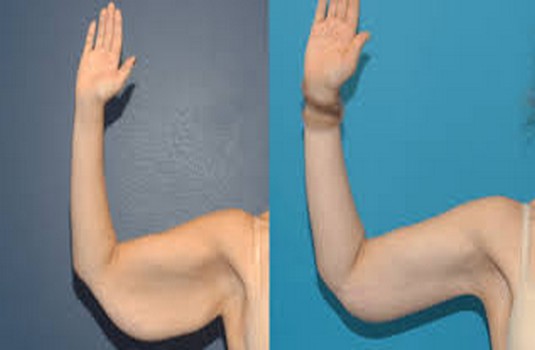Arm reduction, commonly known as brachioplasty, is a surgical procedure designed to reshape and contour the upper arms by removing excess skin and fat. This cosmetic surgery is often sought by individuals who have experienced substantial weight loss, aging, or genetic factors that have led to sagging or “batwing” arms.
In this post, we’ll explore the various aspects of arm reduction and arm lift surgery, including the procedure, postoperative care, preparation, alternatives, potential complications, and a concluding perspective.
The Process of Arm Reduction and Arm Lift Surgery
Arm reduction surgery typically involves the following steps:
Consultation and Assessment:
Before the surgery, you will thoroughly consult a board-certified plastic surgeon. They will assess your health, discuss your expectations, and explain the procedure’s details.
Anesthesia:
The surgery is usually performed under general anesthesia to ensure your comfort and safety throughout the procedure.
Incision Placement:
The surgeon will make an incision along the inner or back of the arm, depending on the extent of correction needed. The incision length and pattern vary based on individual anatomy and the amount of excess skin and fat.
Tissue Removal:
Excess skin and fat are removed through the incision. Liposuction may also be employed to enhance contouring.
Tightening and Closure:
The underlying tissues are tightened, and the remaining skin is skillfully repositioned for a smoother, more toned appearance. The incisions are then closed using sutures.
Drain Placement (if necessary):
In some cases, drainage tubes may be temporarily placed to prevent fluid buildup. These are usually removed within a few days after the surgery.
Returning Home Post-Arm Reduction and Lift
After the arm reduction surgery, patients are typically monitored for a brief period in a recovery room. Once the medical team ensures stability, you can go home. However, it’s essential to arrange for someone to drive you, as you cannot operate a vehicle immediately post-surgery.
Patients are provided with detailed postoperative care instructions, including information on medications, wound care, and follow-up appointments. It is crucial to follow these instructions diligently to optimize the healing process and minimize the risk of complications.
Preparation Guidelines for Your Surgery
Preparing for an arm reduction surgery involves several steps to ensure a smooth and successful procedure:
Choose a Qualified Surgeon
Research and select a board-certified plastic surgeon with experience in performing arm reduction surgeries. Ensure they have a good reputation and positive patient reviews.
Medical Evaluation
Undergo a thorough medical evaluation to assess your overall health and determine your candidacy for surgery. Disclose any pre-existing medical conditions, allergies, or medications you currently take.
Quit Smoking and Alcohol
If you smoke, it is strongly recommended to quit several weeks before the surgery, as smoking can impair the healing process. Additionally, minimizing alcohol consumption is advisable.
Maintain a Healthy Lifestyle
Adopt a healthy lifestyle, including a balanced diet and regular exercise, leading up to the surgery. This helps optimize your overall well-being and aids in the recovery process.
Follow Preoperative Instructions
Your surgeon will provide specific preoperative instructions, such as fasting before surgery and avoiding certain medications that can increase the risk of bleeding.
Exploring Alternatives to Surgical Intervention
While brachioplasty is an effective solution for addressing significant sagging or excess skin in the upper arms, non-surgical alternatives may be suitable for milder cases. These alternatives include:
- Non-invasive Skin Tightening: Procedures like radiofrequency, Sofwave, or ultrasound treatments can stimulate collagen production and tighten loose skin after weight loss without surgery. However, the results may be more subtle compared to surgical intervention.
- Liposuction: Liposuction alone may be an option for individuals with excess fat but minimal skin laxity. It involves the removal of fat through small incisions using a suction device.
- Strength Training: Building muscle through targeted strength training exercises can improve arm tone and definition. While this may not eliminate excess skin, it can enhance the overall appearance of the arms.
It is essential to consult with a qualified plastic surgeon to determine the most appropriate course of action based on individual needs and goals.
Understanding the Potential Complications of Arm Reduction and Lift Surgery
As with any surgical procedure, arm reduction surgery carries potential risks and complications, although they are generally rare. Some of these include:
Infection
Any surgical procedure poses a risk of infection. Proper wound care and adherence to postoperative instructions can minimize this risk.
Scarring
While surgeons strive to minimize scarring, it is an inherent aspect of any surgery. The incisions for arm reduction are carefully placed to be inconspicuous, and over time, scars often fade.
Bruising and Swelling
Bruising and swelling are common after surgery but typically subside within a few weeks. Following postoperative care instructions can help manage these side effects.
Nerve Damage
There is a slight risk of nerve damage during the surgery, which can result in temporary or, in rare cases, permanent numbness or altered sensation in the arms.
Hematoma or Seroma
Collections of blood (hematoma) or fluid (seroma) can occur postoperatively. In some cases, drainage may be necessary to address these issues.
Communicating openly with your surgeon about your medical history and any concerns you may have is crucial. Choosing a qualified and experienced surgeon significantly reduces the likelihood of complications.
Conclusion
Arm reduction and lift surgery can be a transformative solution for individuals seeking to address sagging or excess skin in the upper arms. When performed by a skilled and experienced plastic surgeon, the procedure can significantly improve arm contour and boost self-confidence. While there are alternatives to surgery, they may be more suitable for individuals with less severe concerns.
As with any cosmetic surgery, thorough research, careful consideration, and open communication with your surgeon are crucial. Adhering to preoperative and postoperative instructions will contribute to a smoother recovery and optimal results. While complications are possible, they are generally rare, and the benefits of improved arm aesthetics and self-esteem can outweigh the associated risks for many individuals seeking Brachioplasty.




